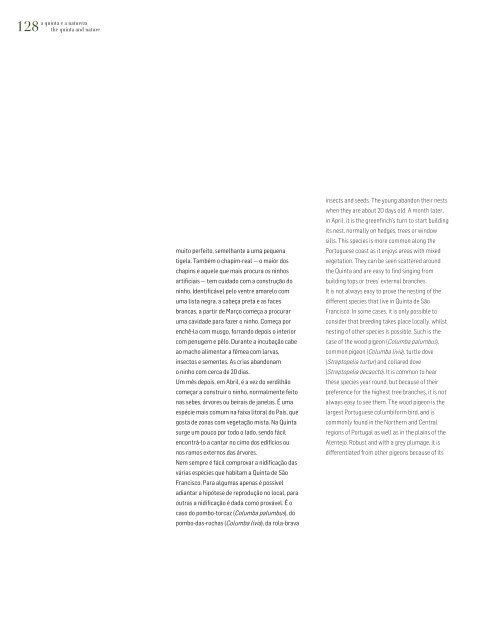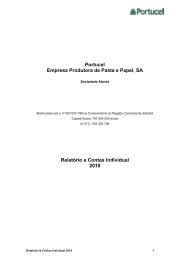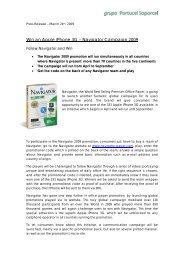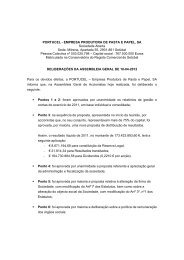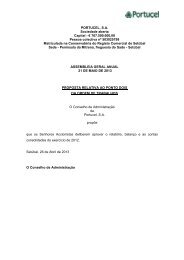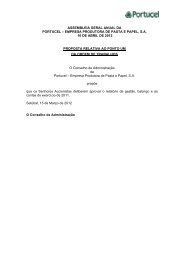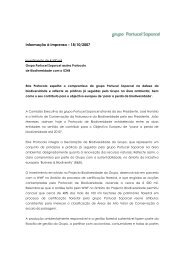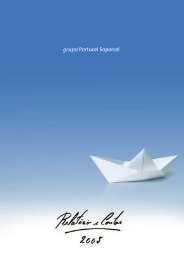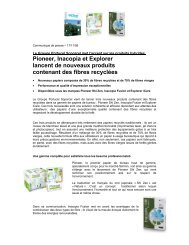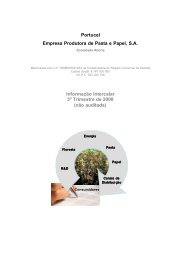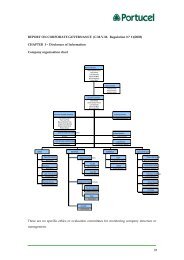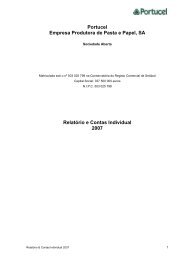Os Eucaliptos e as Aves da Quinta de São Francisco
Os Eucaliptos e as Aves da Quinta de São Francisco
Os Eucaliptos e as Aves da Quinta de São Francisco
You also want an ePaper? Increase the reach of your titles
YUMPU automatically turns print PDFs into web optimized ePapers that Google loves.
a quinta e a natureza<br />
a quinta e a natureza<br />
128 the quinta and nature the quinta and nature 129<br />
muito perfeito, semelhante a uma pequena<br />
tigela. Também o chapim-real — o maior dos<br />
chapins e aquele que mais procura os ninhos<br />
artificiais — tem cui<strong>da</strong>do com a construção do<br />
ninho. I<strong>de</strong>ntificável pelo ventre amarelo com<br />
uma lista negra, a cabeça preta e <strong>as</strong> faces<br />
branc<strong>as</strong>, a partir <strong>de</strong> Março começa a procurar<br />
uma cavi<strong>da</strong><strong>de</strong> para fazer o ninho. Começa por<br />
enchê-la com musgo, forrando <strong>de</strong>pois o interior<br />
com penugem e pêlo. Durante a incubação cabe<br />
ao macho alimentar a fêmea com larv<strong>as</strong>,<br />
insectos e sementes. As cri<strong>as</strong> abandonam<br />
o ninho com cerca <strong>de</strong> 20 di<strong>as</strong>.<br />
Um mês <strong>de</strong>pois, em Abril, é a vez do verdilhão<br />
começar a construir o ninho, normalmente feito<br />
n<strong>as</strong> sebes, árvores ou beirais <strong>de</strong> janel<strong>as</strong>. É uma<br />
espécie mais comum na faixa litoral do País, que<br />
gosta <strong>de</strong> zon<strong>as</strong> com vegetação mista. Na <strong>Quinta</strong><br />
surge um pouco por todo o lado, sendo fácil<br />
encontrá-lo a cantar no cimo dos edifícios ou<br />
nos ramos externos d<strong>as</strong> árvores.<br />
Nem sempre é fácil comprovar a nidificação d<strong>as</strong><br />
vári<strong>as</strong> espécies que habitam a <strong>Quinta</strong> <strong>de</strong> <strong>São</strong><br />
<strong>Francisco</strong>. Para algum<strong>as</strong> apen<strong>as</strong> é possível<br />
adiantar a hipótese <strong>de</strong> reprodução no local, para<br />
outr<strong>as</strong> a nidificação é <strong>da</strong><strong>da</strong> como provável. É o<br />
c<strong>as</strong>o do pombo-torcaz (Columba palumbus), do<br />
pombo-d<strong>as</strong>-roch<strong>as</strong> (Columba livia), <strong>da</strong> rola-brava<br />
insects and seeds. The young abandon their nests<br />
when they are about 20 <strong>da</strong>ys old. A month later,<br />
in April, it is the greenfinch’s turn to start building<br />
its nest, normally on hedges, trees or window<br />
sills. This species is more common along the<br />
Portuguese co<strong>as</strong>t <strong>as</strong> it enjoys are<strong>as</strong> with mixed<br />
vegetation. They can be seen scattered around<br />
the <strong>Quinta</strong> and are e<strong>as</strong>y to find singing from<br />
building tops or trees’ external branches.<br />
It is not always e<strong>as</strong>y to prove the nesting of the<br />
different species that live in <strong>Quinta</strong> <strong>de</strong> <strong>São</strong><br />
<strong>Francisco</strong>. In some c<strong>as</strong>es, it is only possible to<br />
consi<strong>de</strong>r that breeding takes place locally, whilst<br />
nesting of other species is possible. Such is the<br />
c<strong>as</strong>e of the wood pigeon (Columba palumbus),<br />
common pigeon (Columba livia), turtle dove<br />
(Streptopelia turtur) and collared dove<br />
(Streptopelia <strong>de</strong>caocto). It is common to hear<br />
these species year round, but because of their<br />
preference for the highest tree branches, it is not<br />
always e<strong>as</strong>y to see them. The wood pigeon is the<br />
largest Portuguese columbiform bird, and is<br />
commonly found in the Northern and Central<br />
regions of Portugal <strong>as</strong> well <strong>as</strong> in the plains of the<br />
Alentejo. Robust and with a grey plumage, it is<br />
differentiated from other pigeons because of its<br />
O gaio tem por hábito armazenar bolot<strong>as</strong> para se alimentar no Inverno.<br />
The jay h<strong>as</strong> the habit of collecting acorns to feed on in the winter.


